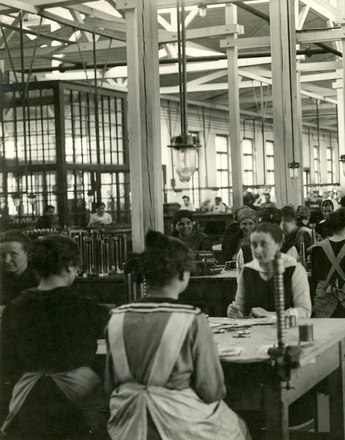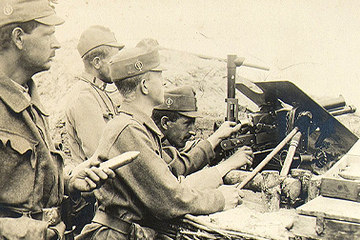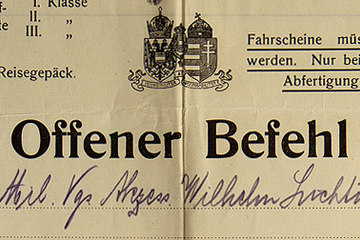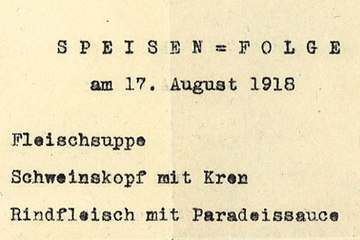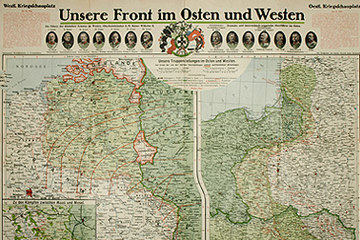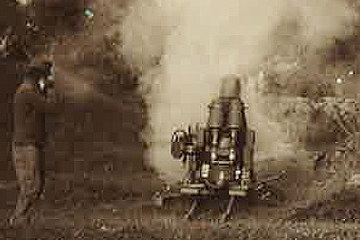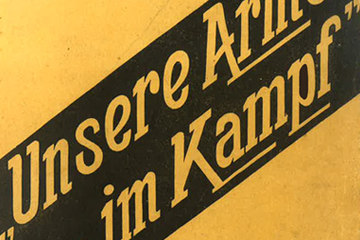The appearance of Imperial-Royal soldiers radically changed shortly after the war broke out, most of all because of the shortage of suitable raw materials and the impractical uniforms worn until then.
The adjustment provision for the Imperial-Royal Army of the years 1910/11 determined a uniform colour of Hechtgrau – “pike grey”, excluding the cavalry. Uniforms, equipment and weapons were allotted to the soldiers from military/state property; all other things, including tobacco, pipes, sewing materials for uniform maintenance and utensils for personal hygiene and body care came from the soldier’s private pocket. Isabelle Brandauer points out that Hechtgrau soon proved to be “too conspicuous” for the battlefield and its production “too costly”, thus Feldgrau – field grey – was introduced as uniform colour in 1915, also for the cavalry. Furthermore, at the end of 1916 a uniform adjustment was stipulated for all types of troops. This facilitated production and provisioning, because the clothing was now uniform and did not consist of different trousers, shirts and coat models used until then.
There was a catastrophic shortage of uniforms relatively soon after the outbreak of war, which continued throughout the war years. Brandauer shows that the factors responsible for this was the lack of basic raw materials, cotton, sheep’s wool, both materials “almost all of which had to be imported in any case in peacetime”. In view of this shortage it was deemed necessary to blend in poor surrogate materials, such as synthetic wool fibres or nettle fibre. The deteriorating quality of uniforms was felt by the soldiers on the front especially when they lacked clothing that was sufficiently warm or protective against wet conditions.
And throughout all this, the troopers were the ones who were expected to encounter this deficiency situation by regularly cleaning their uniforms, especially ridding them of vermin including lice, and constantly darning, patching and sewing them. Officially the aim was if possible to re-use old uniforms, or those uniforms that were no longer ‘used’ because of the death of their wearers. In order to clean the soldiers’ uniforms sufficiently and free them of dirt, sweat and usually from lice, so called “Felddampfwäschereien” (field steam laundries) were set up in which washing was laundered and disinfected. These often offered opportunities for the soldiers to wash and de-louse themselves.
Despite the obvious difficulties in providing the troops with clean and practical uniforms, the authorities insisted that the troops should appear ‘immaculately fitted out’ in appearance. This applied on the one hand to physical appearance, first and foremost head hair and beard, which were not only to be groomed but regularly cut to the prescribed minimum length. On the other hand, the superior officers performed regular inspections, usually on Sundays, when the soldiers’ uniforms, equipment and footgear were meticulously reviewed.
Translation: Abigail Prohaska
Brandauer, Isabelle: Menschenmaterial Soldat. Alltagsleben an der Dolomitenfront im Ersten Weltkrieg 1915–1917, Innsbruck 2007
Quotes:
„too conspicuous (…) too costly“: quoted from: Brandauer, Isabelle: Menschenmaterial Soldat. Alltagsleben an der Dolomitenfront im Ersten Weltkrieg 1915–1917, Innsbruck 2007, 120
„Furthermore, at the end of 1916 …“: Brandauer, Isabelle: Menschenmaterial Soldat. Alltagsleben an der Dolomitenfront im Ersten Weltkrieg 1915–1917, Innsbruck 2007, 120
„almost all of which had to be imported ...“: quoted from: Brandauer, Isabelle: Menschenmaterial Soldat. Alltagsleben an der Dolomitenfront im Ersten Weltkrieg 1915–1917, Innsbruck 2007, 120
„In view of this shortage …“: Brandauer, Isabelle: Menschenmaterial Soldat. Alltagsleben an der Dolomitenfront im Ersten Weltkrieg 1915–1917, Innsbruck 2007, 120
„Felddampfwäschereien“: Brandauer, Isabelle: Menschenmaterial Soldat. Alltagsleben an der Dolomitenfront im Ersten Weltkrieg 1915–1917, Innsbruck 2007, 121
„On the other hand, the superior officers …“: Brandauer, Isabelle: Menschenmaterial Soldat. Alltagsleben an der Dolomitenfront im Ersten Weltkrieg 1915–1917, Innsbruck 2007, 123-124





